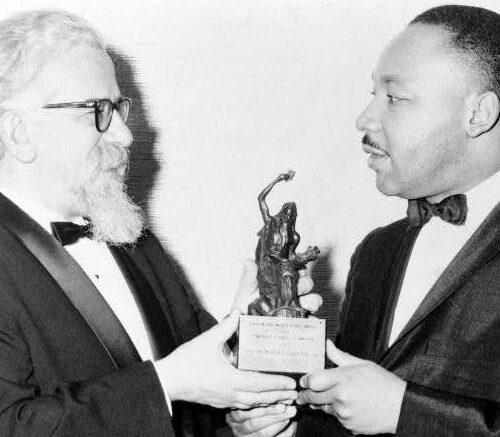Lessons
We Belong at the Table: Centering Jewish Diversity

State standards
Results
Length: 60-120 minutes | Grades: 6-12 | Themes: Jewish diversity
Lesson Overview
Every community contains a wide range of experiences and identities, even when its members share common traditions, texts, and histories. The Jewish people are no exception. As a global community that has lived across continents for centuries, Jews represent a wide spectrum of cultures, languages, ethnicities, races, and religious practices. This diversity is the result of both movement and exchange. Living in diaspora has meant adapting, blending, and preserving traditions in new ways. Jewish identity, like all identities, is not fixed. It is shaped by debate, creativity, and cultural interaction. That richness can be seen in the varied ways Jewish people celebrate holidays, observe rituals, speak, eat, and express themselves.
In this lesson, students will explore the idea of cultural expression. Acting as museum curators, they will closely examine artifacts and examples of Jewish life that reflect the community’s diversity. Through this process, students will practice observing details, thinking critically, and reflecting on their own intersecting and evolving identities. The lesson emphasizes both understanding difference and recognizing the shared human experience of building community across time and place.
Enduring Understanding
All forms of collective identity are diverse and evolving.
Jewish people have shared customs and rituals with distinctive forms of expression that continue to change across time and place.
The complexity of collective identities is reflected in various forms of material culture, art, and cuisine.
Essential Questions
Why are collective identities complex and multifaceted?
What does Jewish diversity look like?
How has Jewish identity evolved?
Learning Objectives
Students will be able to describe the various ways in which all forms of collective identity are diverse and dynamic.
Students will be able to make observations about the ways Jewish identity is diverse.
Students will be able to articulate an understanding of their classroom’s diversity by assuming the role and responsibilities of a museum curator.
Toolkit
-
We Belong at the Table lesson plan
-
We Belong at the Table slide deck
-
We Belong at the Table videos
-
Showcasing Jewish Diversity handout
-
Showcasing Our Diversity handout
-
Our Holiday Tables handout





